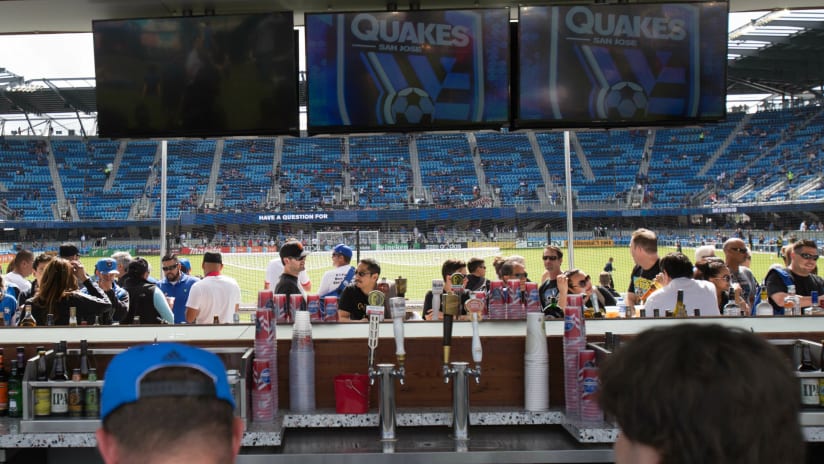SAN JOSE, Calif. — As MLS fans descend on acronym-filled Silicon Valley this week for the league's All-Star Game, they should prepare to meet one more:
LOBINA.
That’s short for Longest Outdoor Bar in North America, a 3,650-square-foot patch behind Avaya Stadium’s northern goal which has grown quickly to became one of the architectural signatures of the San Jose Earthquakes’ 16-month-old home.
“We’re used to it now, that we have this beautiful bar,” Quakes president David Kaval told MLSsoccer.com. “But I think so many people think it’s the defining feature of the stadium.”
While there are plenty of features in the Quakes’ $100 million facility, perhaps none draws the attention of the LOBINA, which sits underneath the stadium’s giant scoreboard at the open end of its horseshoe-shaped stands. Errant free kicks can imperil expensive bottles of liquor or one of the televisions mounted behind the bar.
After watching four TVs bite the dust last season, according to Kaval, the team installed netting in an attempt to protect the bar area during pre-game and halftime warmups, when the area would be peppered by players “just teeing off” on things.
This season, there haven’t been any electronic casualties, although there have been plenty of TVs given away to fans. Under a new sponsorship deal with Chinese manufacturer TCL, fans can earn 4K sets in multiple ways, including one for every patron that brings back a ball struck into the bar area during the run of play.
For the All-Star Game on Thursday, Kaval said the Quakes will have all hands on deck to help fans looking to get served at LOBINA. “We will be absolutely 'maxed out' on points of sale, staffing, et cetera,” Kaval said. “That’s especially important, so people who’ve never been to the stadium can have the full Avaya Stadium experience.”
So many fans pass through the area during the course of a typical match that their empty seats in the stadium bowl can make it seem as though the Quakes’ attendance figures — the team has reported a sellout of 18,000 for all 24 regular-season matches at Avaya — are incorrect.
Although sales of standing-room seats in front of the bar have helped lessen the tendency for fans to congregate and not return to the stands, Kaval said he finds that fact a feature to be celebrated rather than a bug to be corrected.
“If they want to watch 40 minutes in their seat and 20 minutes at the scoreboard bar, I’m OK with that,” Kaval said. “I don’t want to make it so rigid that we lose that.”













